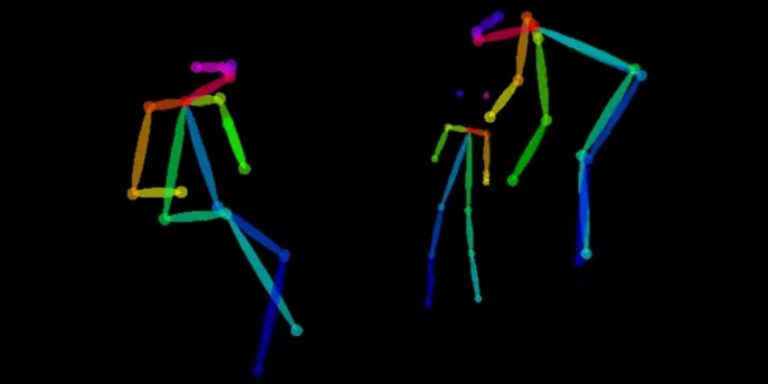
A research team at the University of Geneva (UNIGE) has developed an AI-based method to detect and diagnose early autistic disorders. This algorithm, which was developed over three years, analyses the movements of children on video and identifies characteristics of autism spectrum disorders or not. This tool, which proposes an early diagnosis, is hopeful, because the earlier an autistic disorder is detected, the more it is possible to adapt.
Successfully identifying autism spectrum disorder as early as possible
Worldwide, autism spectrum disorder (ASD) affects one in 54 children. ASD is defined as difficulties in social interactions, in all functions related to communication and by the presence of repetitive, restricted behaviours and/or sensory particularities. All of these characteristics cause a delay in the child’s development, which is why it is so important to detect ASDs and take care of them as early as possible. Marie Schaer, professor at the Department of Psychiatry of the Faculty of Medicine of the University of Geneva (UNIGE) states:
“If the diagnosis is made before the age of 3, it is often possible to catch up with these developmental delays thanks to a specific behavioural intervention, which completely changes the trajectory of skill acquisition of these children and very often allows them to integrate the public school circuit.”
A team from the University of Geneva has developed an artificial intelligence-based method to identify early autistic disorders at a young age. Their discovery was the subject of a publication written by Nada Kojovic, Shreyasvi Natraj, Sharada Prasanna Mohanty, Thomas Maillart & Marie Schaer.
AI video analysis to diagnose autism spectrum disorders
The system designed by the UNIGE researchers and the NCCR Synapsy classifies videos based solely on the child’s movements when interacting with another person. To do this, they first used a technology called OpenPose, which extracts the skeletons of the people moving in a video and allows the analysis of gestures by removing all the characteristics that could be discriminating (age, sex, setting, etc.), keeping only the relationships in space and time.
The experts then developed and tested their AI algorithm on 68 children with normal development and 68 children with autism, all under the age of 5. Thomas Maillart, a researcher at the Institute of Information Sciences and a member of the Faculty of Economics and Management (GSEM) and the University Center for Informatics (CUI) at the UNIGE explains this phase:
“We divided each group into two: the first 34 in each group ‘educated’ our AI so that it managed to differentiate the non-verbal behaviour of children with and without autism. The others were then used to test the skills of the algorithm to see if it worked. We finally ran another test on 101 other children.”
Interesting results that encourage the design of a future mobile application
The experiments show that the AI gets a correct result in 80% of the cases. Marie Schaer commented on these results:
“For a first screening, this is an excellent result, because in 10 minutes, we can get a first screening accessible to anyone, wherever he/she lives. This would allow parents worried about their young child to get an initial automated assessment of the symptoms of autism – which of course will not be perfect – but which can be confirmed by a consultation with a specialist later on.”
These words correlate with the fact that studies show that it often takes more than a year between the parents’ first concerns and the moment they are referred to a specialist consultation. Now, the objective of the multidisciplinary team is to make this AI available to everyone, perhaps in the form of an application where a simple video of about ten minutes would allow an analysis by the AI of the ASD.
Translated from Un projet de recherche vise à repérer et diagnostiquer des troubles autistiques grâce à l’intelligence artificielle









